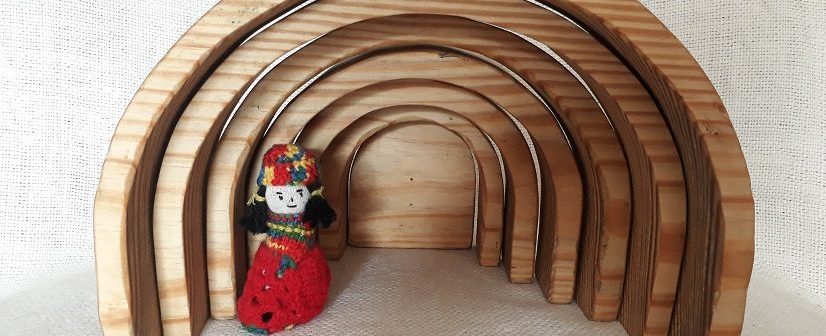
Toys from our Roots
Do you remember the toys that we and our parents used to play with? Most of our dolls were made of fabric, wool, and natural cotton, and the rest of the toys were steel crockery, including plates and spoons, wooden mortar and pestle, chakla belan, and charpai. Where are these toys now?
Around 90% of toys in Pakistan worth Rs. 500-600 million are imported from China alone annually [1]. These toys are in the shape of fictional characters foreign to most children in Pakistan. The loud sounds and illuminating toys catch their attention immediately, but what usually happens with such toys after a few days? The broken plastic toys take millions of years to degrade naturally and thus end up in landfills or oceans, harming the soil and marine life. Moreover, these toys include those made from low-grade and recycled plastic and are painted with paints containing heavy metals. As children are susceptible to exposure to toxic substances, lead, for example, has been reported to have caused damage to physical growth, impaired learning, and adverse behavior among children in Pakistan.[2] Moreover, electronic toys that light up, talk, or play music might slow language development in toddlers.[3]
Of course, market provides what the customer demands…or is it the other way round? It is difficult to point a finger at anyone because we live in a very complex world. However, one thing we are all sure about is that the experiences of our children are developing them as beings that are away from their nature and cultural roots. Studies have shown that when provided with fewer natural and open-ended toys in the environment, toddlers engage in longer periods of play with a single toy, allowing better focus to explore and play more creatively. [4], [5] Secondly, plastic toys’ visual and sensory experience is quite different from those made from natural materials. Natural materials give a sense of comfort and reduce stress. Such critical experiences in childhood leave a long-lasting impression on a human’s physical and mental health.[6] We believe that the imitation and curious nature of children can perfectly be channelized through Waldorf toys that provide the best social and natural environment to children in the form of toys.
[1] Khan, A. S. (2017). Chinese goods dominate market. Retrieved September 25, 2018, from DAWN.com: https://www.dawn.com/news/1341555
[2] Rahman A, Maqbool E, Zuberi HS. (2002). Lead-associated deficits in stature, mental ability and behaviour in children in Karachi. Ann Trop Paediatr. 22:301–11.
[3] Dallas, M. E. (2015). Why chatty, flashy toys may not be best for babies. Retrieved September 25, 2018, from CBS News: https://www.cbsnews.com/news/why-chatty-flashy-toys-may-not-be-best-for-babies/
[4] Knapton, S. (2017). Too many toys are bad for children, study suggests. Retrieved September 25, 2018, from The Telegraph: https://www.telegraph.co.uk/science/2017/12/05/many-toys-bad-children-study-suggests/
[5] Feeney, S., & Moravcik, E. (1987). in Young Children. Young children.
[6] Elkind, D. (2005) The Changing Wold of Toys and Toys Play http://teachers.olatheschools.com/jwilcoxsonhlc/files/2008/09/Changing-World-of-Toys.pdf




Leave a Reply